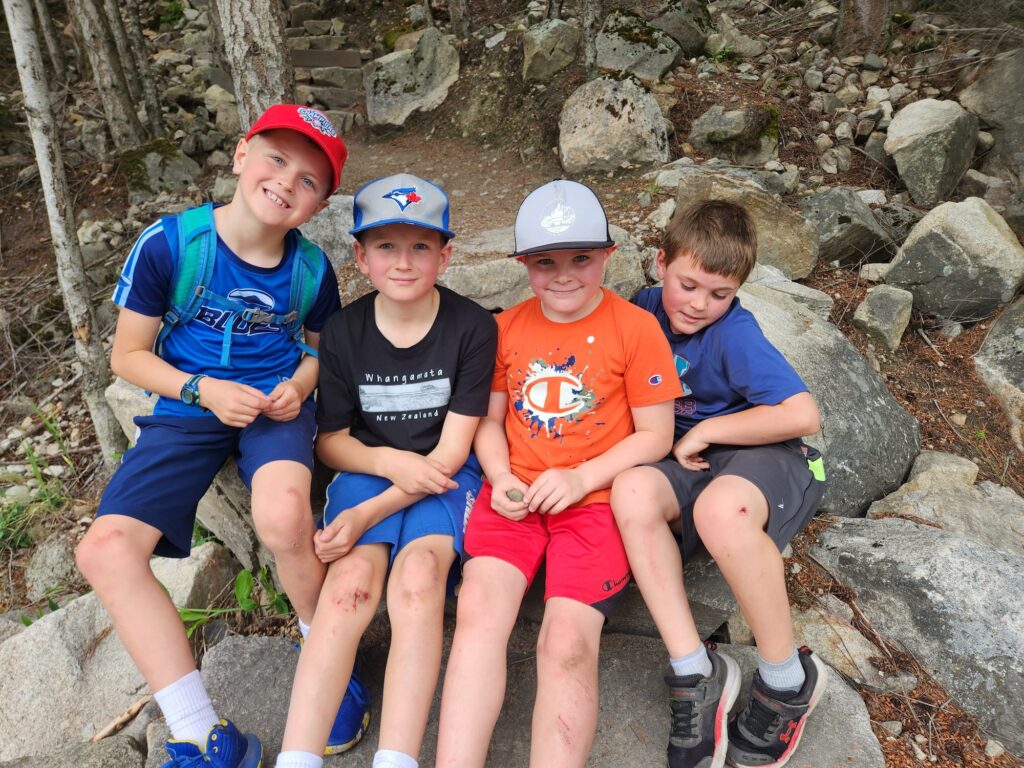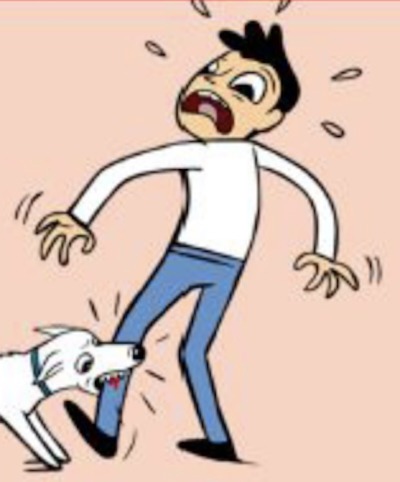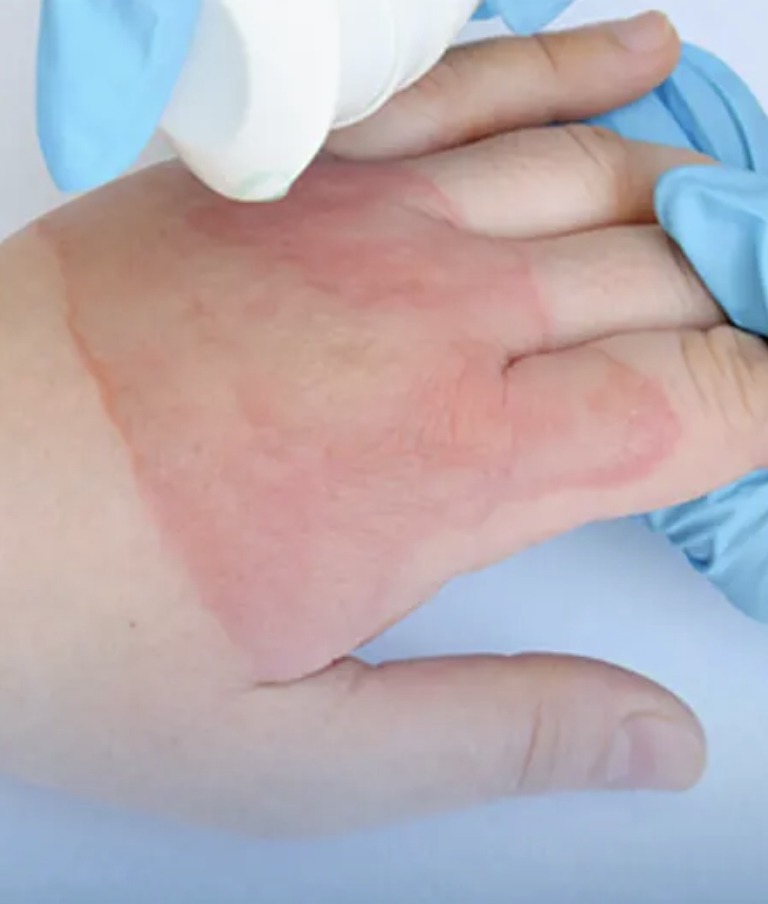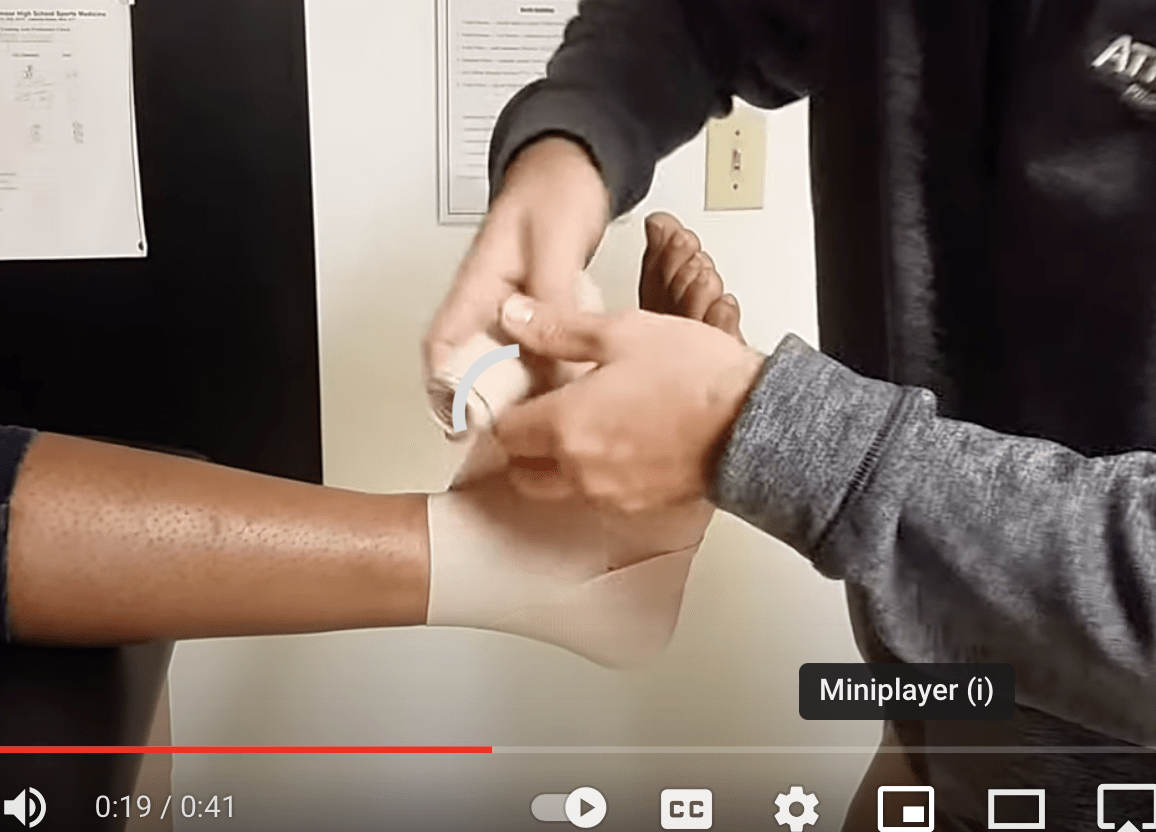Empowering the Citizen Patient

Article #8
Healthy People, Healthy Communities –
Be Prepared with Basic First Aid for Home and Play
Accidents and injuries are an inevitable part of life, often occurring when we least expect them. Whether it’s a slip of a knife in the kitchen, a fall from a bicycle, or a bee sting, being prepared to manage such incidents and knowing when to seek professional help are crucial skills. Dr. Mindy Smith, in this seventh installment of the “Empowering the Citizen Patient” series, provides a guide to basic first aid..
When I was 10 years old, I hit a rock while riding my bicycle and flew over the handlebars, skinning my knee. My mom bandaged it up, but by nightfall it was quite swollen. Mom took me to our doctor who drained it and I was soon back on my bike!
Being prepared to manage injuries and knowing when to get help are important skills to have!
Get a First Aid Kit
Having a well-stocked first aid kit at home can make a big difference during an emergency.
Leila Dale from Nelson shares, “Our first aid kit is in a cupboard for easy-access, the whole family knows where to find it, and I make sure it has everything we need if an accident happens. With three active kids under 10, sometimes it feels like we go through a box of bandages a week! I also keep a mini-kit in my car.”

Max, Angus, Levi, and Dion were in need of minor first aid after a speedy descent from Lyons Bluff in Nelson.
A good first aid kit should include:
- Elastic bandages (tensor) in various sizes for sprains
- Triangular bandage for a sling or tourniquet
- Bandages of all sizes
- Gauze pads for cleaning and non-adhesive pads (Telfa) for covering wounds
- Paper tape or self-adherent wound wrap
- Moleskin for blisters
- Scissors, safety pins, and tweezers
- Antiseptic agent, exam gloves, and a small flashlight
- Medications: aspirin, antihistamines (e.g., Benadryl), steroid cream (e.g., 1% hydrocortisone), burn cream (e.g., aloe vera), antibiotic cream (e.g., Polysporin), pain relievers (e.g., acetaminophen, ibuprofen), decongestant nose spray, antacids, and antidiarrheals (e.g., Imodium).
For additional information, visit WebMD’s First Aid Kit Treatment. Another helpful website with downloadable handouts to self-treat many conditions is available at https://myhealth.alberta.ca/health/aftercareinformation.
When to Seek Help
It is important to seek help when you feel overwhelmed by the situation or if the injured person shows severe or worsening symptoms. For instance, get help immediately if the person is unconscious, having trouble breathing, speaking, or seems confused. Additionally, if there are signs of infection such as increased or uncontrolled pain, swelling, red streaks, pus draining from the wound, or fever, professional medical help is required. If it’s been more than 10 years since your last tetanus shot, you might need one for a wound, burn, or puncture.
Treating Common Injuries

Bites & Bee Stings
Insect bites, spider bites, and bites from animals or even humans are common. If the bite area is bleeding, apply pressure until the bleeding stops. Clean the wound with soap and water, apply antibiotic cream or petroleum jelly, and cover it with a clean, non-stick bandage. For itchy insect bites, a steroid cream can help.
For bee stings, remove the stinger if visible, apply an ice pack (10 minutes on, 10 minutes off for an hour), and use a mild steroid cream. Get medical help if bitten by a cat or human, or if the bite is on the hand, as these bites often require oral antibiotics. Large wounds needing stitches, bites that continue to bleed, bat bites, and poisonous snake bites need professional medical attention.
Burns
Burns can be caused by heat sources such as the sun or fire and treated based on severity. Surface burns are just red (first degree), partial-thickness burns form blisters (second degree), and full-thickness burns (third degree) result in no pain and appear white/gray to black and dry.
For minor burns, apply cool water for 5 minutes or use a cold pack for pain or itching. Aloe vera can also help. For blisters, cut away any dead skin, use an antibiotic or nanocrystalline silver cream and cover with a clean, non-stick bandage. Wash the area daily with soap and water. Get medical help for burns covering more than 10% of the body, burns on the face, hands, feet, genitals, or major joints, and any full-thickness burn. Watch for signs of infection as well.

Cuts and Scrapes
These are everyday occurrences that require immediate attention. Apply pressure with a sterile bandage or clean cloth until bleeding stops. Clean the wound with soap and water, apply antibiotic cream or petroleum jelly, and cover with a clean, non-stick bandage. Wash the area daily and manage pain as needed. Get medical help if wounds are large as they may require stitches or if a wound continues to bleed or shows signs of infection.
Strains and Sprains
Rest is crucial for strains (muscle pulls) and sprains. Avoid walking on a sprained ankle and use crutches if necessary. Apply a cold pack for 15-20 minutes several times a day for the first few days, then switch to heat. Elevate the sprained limb and use an elastic wrap for support (Learn how!). Mild stretching and massage can help with recovery. Get medical help if pain persists for more than a few days; if there is numbness or tingling; if you heard a pop when the injury occurred; or if there is severe swelling, a visible deformity, or pain over a bone. For an ankle sprain, if you can’t walk or there is bruising on the inside of the ankle, professional evaluation is recommended.
Accidents happen, but being prepared with a well-stocked first aid kit and knowing basic first aid can make a significant difference in managing injuries effectively. Remember, it’s always better to seek help when in doubt, especially for severe symptoms or signs of infection. I’d encourage everyone to familiarize themselves with basic first aid procedures and to stay informed by visiting reliable sources like WebMD. Selkirk College or your Regional District Recreational programming also have a wide-variety of First Aid courses to get certified!
Click/Tap the LIKE button to share via email, instagram, Facebook and More!
We would love to hear from you!
What did you think of this article? What could we do better? Any suggestions for other articles that would be helpful? Please complete our short survey here!
First Aid Guide!
| Problem or Injury | What to do for it (home care) | When to get help (clinician) |
| Allergic reaction – these can be from medications, foods, pollens, animal dander, contact or stings | Avoid exposure when possible Itching skin: apply mild steroid cream, take oatmeal bath Sneezing, itchy eyes or mouth: steroid nose spray or antihistamine If known severe allergy, use self-injected epinephrine and carry a medical alert card/bracelet |
Skin rash (e.g., hives, itching or flushing, swollen lips-tongue-uvula) AND any problem breathing or faintness or fainting (anaphylaxis) Symptoms not controlled |
| Bites – these can be from insects, spiders, snakes, cats, dogs and people | Rinse the wound with lots of tap water, clean with soap and water, apply pressure if bleeding Apply antibiotic cream or petroleum jelly and clean non-stick bandage Treat pain |
Any cat or human bite or bite to the hand (antibiotics) Large wound needing stitches or with continued bleeding Any snake bite (antivenom) Tetanus shot if more than 10 years since one If rabies is possible (contact with bat; shots) |
| Broken bone | If bleeding, apply pressure to any open wound with a sterile bandage or clean cloth Keep the injured area from moving with a splint or bulky bandage Apply ice packs to limit swelling and help relieve pain |
All suspected breaks (misshapen; see bone through skin; very painful; more than a little swelling, bruising or bleeding; numbness or tingling; not able to move it or put weight on a leg) |
| Burn – chemical | Apply a large amount of water for 20 minutes; remove affected clothing unless stuck to skin | All chemical burns |
|
Burn – heat (e.g., sun, fire)
|
Apply cool water for 5 minutes; a cold pack can be used for pain or itching; aloe vera can also help Cover a blister area with an antibiotic or nanocrystalline silver cream and clean non-stick bandage Wash daily with soap and water If the blister is broken, cut away dead skin before (re)bandaging Treat pain |
All chemical burns |
| Choking | Encourage the person to cough and spit out the object; if still choking, bend them forward and give up to 5 back blows to dislodge the blockage; if still choking hold around the waist and pull inwards and upwards above their belly button | If still choking after those efforts or not breathing |
| Cuts and scrapes – cuts on the scalp or face tend to bleed a lot but may not be serious | If bleeding, apply pressure with a sterile bandage or clean cloth Clean with soap and water Apply antibiotic cream or petroleum jelly and clean non-stick bandage Wash daily with soap and water Treat pain |
Large wound needing stitches or with continued bleeding Signs of infection (increased pain, swelling, red streaks, pus draining, fever) Tetanus shot if more than 10 years since last one |
| Eye injury | If it feels like something is in the eye, blink but do not rub; rinse the eye with water or eye drops (artificial tears) or use a wet cotton swab to gently remove it. If injured with a sharp item, cover the eye to protect it and get help. For blunt injury (e.g., finger), apply a cold compress, do not use pressure |
Any metal or wood foreign body or if the object can’t be easily removed. Seek help for persistent pain, redness or light sensitivity. Any injury with a sharp item that penetrates the eye. Seek help for black eye, pain or trouble seeing out of the eye |
| Fall and hit head | Determine if the injury is severe (see seek help). If severe, stabilize the head and neck, keep them still, apply pressure to a bleeding wound and call for help. If not, you can use a cold compress to the head, rest, treat pain, monitor for worsening or new symptoms | If not breathing; loss of consciousness; confusion or agitation; trouble with speech, balance or walking; severe headache, vomiting, bleeding from nose or ears |
| Headache | Try a cool cloth on your head; rest in a dark, quiet room; massage, try a little caffeine and treat pain (see above); use prescribed medication for migraine* | Severe pain or confusion, fever, neck stiffness, trouble speaking, or numbness or weakness |
| Hyper or hypothermia (over-heated or too cold) |
For heat: rest or lie down in cool place, loosen or remove excess clothing, sip cool water or electrolyte drink, place a cool wet cloth on the forehead, take a cool bath or shower For cold: get to warm place, cover head and body with blankets, remove wet clothes, dry skin, slowly warm them with hot water bottle/heat pack |
Heat: confusion or agitation, poor balance, faint or rapid pulse, lack of sweating, dry flushed skin, unconscious Cold: no shivering, confusion or unconscious, slow heart rate, drowsy or lethargic |
| Mouth injury | Rinse the mouth with warm salt water; eat soft bland foods for several days; treat pain, can try sucking ice pop/topical like Orabase Tooth injury: Apply pressure if bleeding, as above |
Problem swallowing, continued bleeding, increased pain or signs of infection Tooth is loose, jagged, or knocked out |
| Nose bleed – usually from dry air or nose picking | Blow your nose to clear any clots Pinch your nose for 5-10 minutes A decongestant nose spray might help if it happens again quickly Consider applying antiseptic cream or ointment inside nose to prevent |
If from an injury, your nose may be broken (crunch or cracking sound, misshapen, hard to breathe through nose) Continued bleeding (packing or cauterization needed) |
| Splinters | Clean with soap and water Use a tweezer to take out the splinter or use a small needle or safety pin to gently remove, clean and apply petroleum jelly or antibiotic cream |
If you can’t remove a splinter, try hydrogen peroxide or a paste of baking soda and water;+ seek help if not able to remove |
| Sprain/muscle strain/pull (general) | Rest for a few days, cold pack for 15-20 minutes several times a day for several days then try heat, elevate and use an ace wrap, treat pain, mild stretching; massage | Pain is not going away in a few days, there is numbness or tingling, you heard a pop when the injury happened, you can’t do basic tasks (e.g., get out of bed) |
| Sprained ankle | Rest for a few days (if walking is painful, you can use crutches), ice pack for 15-20 minutes several times a day, elevate, use an ace wrap# | Severe pain or severe immediate swelling, obvious bony deformity or pain over the bone, unable to walk on your leg, bruising on the inside of the ankle |
| Sprained knee | Rest for a few days (if walking is painful, you can use crutches), ice pack for 15-20 minutes several times a day, elevate, use an ace wrap to reduce swelling (not too tight) | Severe pain or severe immediate swelling, you heard a pop when the injury happened, obvious bony deformity or pain over the bone, unable to bear weight |
| Stings – these are usually from wasps or bees | Clean with soap and water, remove the bee stinger if seen, apply ice pack (10 min on, 10 off for an hour), use a mild steroid cream, take an antihistamine for allergic reaction; if known allergy use an epi pen | Symptoms such as more than mild swelling, hives, itching, trouble breathing or swallowing, faintness or nausea |
$Maneuvers for choking – see https://www.youtube.com/watch?v=XzsAYtn9YFo
*Symptoms of migraine include throbbing pain, sometimes in one part of the head or face; nausea (sick to stomach); and sensitivity to light or sound; some people have an aura such as flashing or wavy lights or muscle weakness up to an hour before the headache.
+ see https://trustcarehealth.com/blog/5-creative-ways-to-painlessly-remove-a-splinter
#for applying a figure of 8 wrap see: https://www.youtube.com/watch?v=nI6mS7-opao

Get the articles direct to your inbox!

